As a representative from the United States, it was inspiring to see that addressing environmental issues is such a high priority among so many people in Cambodia. Leaders young and old are working hard with beautiful creativity to heal our world.
The American Arts Incubator – Cambodia Facebook page continues to be a vibrant hub for workshop participants, environmental activists, and media artists in Cambodia. The four teams are continuing their projects, launching their own social media campaigns, and are well on their way to Phase 2 project production. I am excited to be a long-distance advisor as their projects continue to grow. The 360 Ricoh Theta S camera and virtual reality (VR) goggles purchased for the workshop are being shared in an ongoing equipment pool for the groups. The installed solar electric system for the Bophana Audiovisual Resource Center continues to provide power each day for screens to show artwork and fans to keep everyone cool. It is inspiring to know that when the sun is setting here in Philadelphia, it is rising over the solar panel in Phnom Penh.
I feel honored to have led the Incubator at Bophana Center in Cambodia and thankful for all the support and enthusiasm of the Bophana Center staff. I was most impressed by the dedication and commitment of the participants. The teams worked really well together considering the strain of creative deadlines. Fortunately, there were no breakdowns or ego battles in the busy final days. A real sense of camaraderie developed among the teams as well as across the whole group. The final exhibition was a tremendous success and groups of visitors continued to come in for the month-long duration of the exhibit.

One of the installations created by the Plastic Team featured a statue of the mythological mermaid, Suvannamaccha, made out of plastic bottles and newspaper headlines. The statue had trigger images of sickly fish and some fruit. When looked at through the augmented reality (AR) app, the fish and fruit disappeared to reveal an image of the mermaid. The installation's purpose was to warn us of a future where ocean life disappears because of trash and other pollutants.
Usually, AR projects are about adding a new layer of information on top of the trigger image. This was a learning moment for me as the participants expanded my horizons to look at the technology differently. Their project conveyed how adding something can have a subtractive effect. Perhaps this approach can provide new and unique solutions to the seemingly futile pursuit of environmental sustainability.
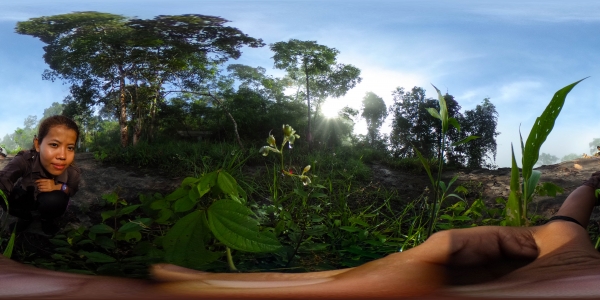
While a couple of workshop participants had experience with virtual reality, none of them had ever experienced an augmented reality project. It was powerful to realize that in Cambodia, their first experiences with AR and VR were as art projects and not simply commercial applications for a corporate product. During the American Arts Incubator workshop, I watched them realize their potential as makers and innovators, not merely as passive consumers. They are now at the forefront of developing the aesthetics of these new mediums.
The one exciting potential of new media technologies is that peoples' use of it has not been trained by a lifetime of cultural influence. Through the workshop, participants were able have a more pure and personally pioneering experience in imagining the potential for AR and VR as tools for art-making and creating social change.
The community project descriptions below were written by participants in American Arts Incubator — Cambodia and focus on environmental health in the country. These projects were initiated during Michael Kuetemeyer's Incubator workshop and will continue to develop after the Incubator is complete. They were presented at the New Media Exhibition at Bophana Center from May-June 2017.
Artist team: Chum Mab, Chhit Vannat, Mok Sina, James Speck, Soin Vanda, Hul Hunsopheary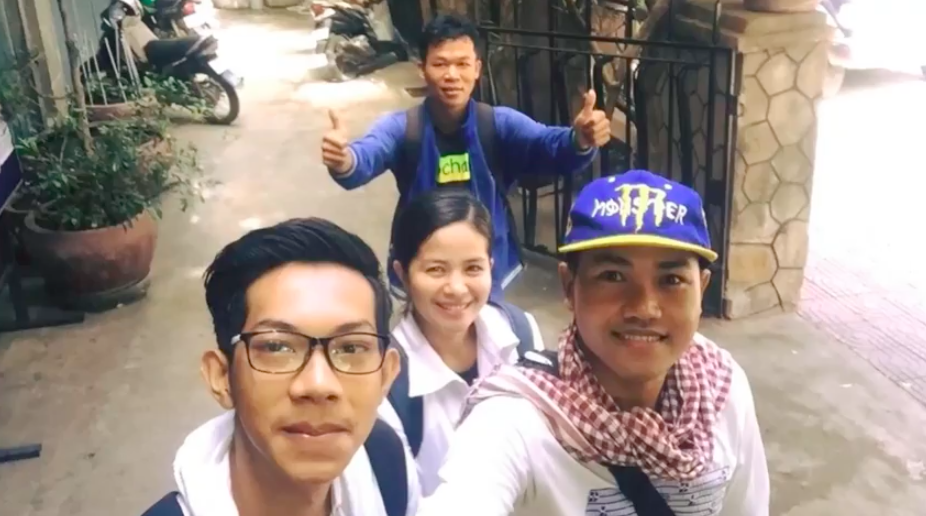
The Plastic Commune team is building statues of the god Hanuman and the mermaid princess Suvannamaccha out of recycled plastic bottles and newspaper. Images on these sculptures trigger augmented reality 3D models of these miraculous modern materials we are able to create but then treat without respect. Hanuman saved the world once upon a time. Can we all join him in this current epic quest to rescue the earth?
They are also producing the documentary, Our Health Our City, asking the residents of Phnom Penh about how trash impacts their lives.
Artist team: Sanuch Svay, AN Sopheaktra
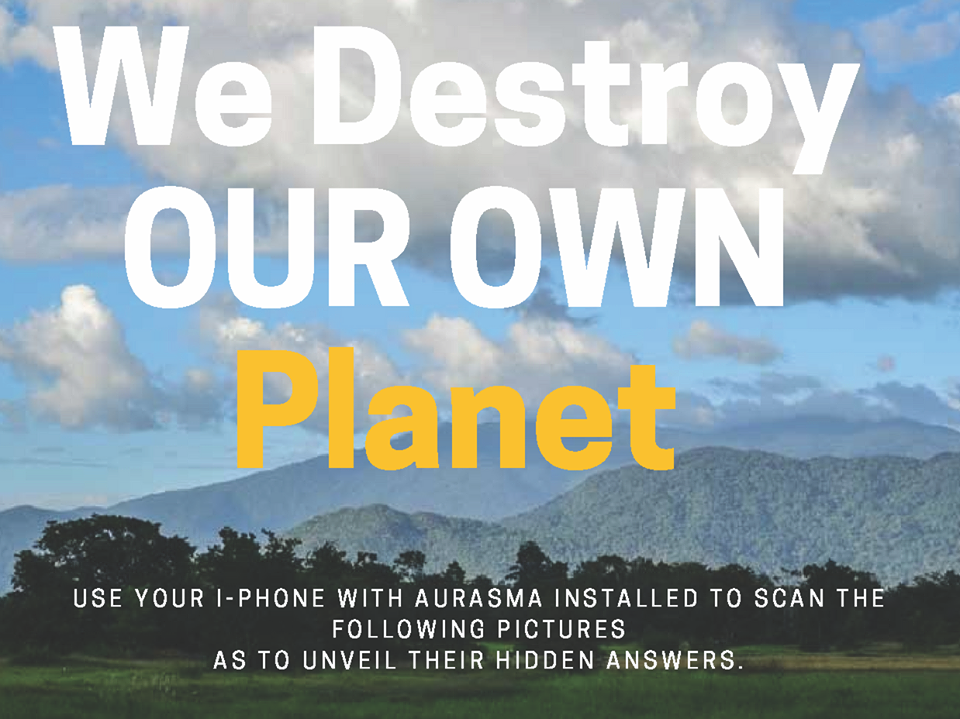
The Global Warming team is developing infographic posters that trigger 19 separate overlay video segments via augmented reality. The challenge of global warming is investigated in three phases: 1. the human activity that is causing global warming 2. the risks we all experience as a result and 3. the solutions we can employ to avoid the on-coming collision of wasteful prosperity with environmental destruction.
They have started a new project of personal community outreach and education using AR and VR new media.
Artist team: Tum Yuryphal, Seng Mengbunrong, Heng Lida, Bun Sreymom
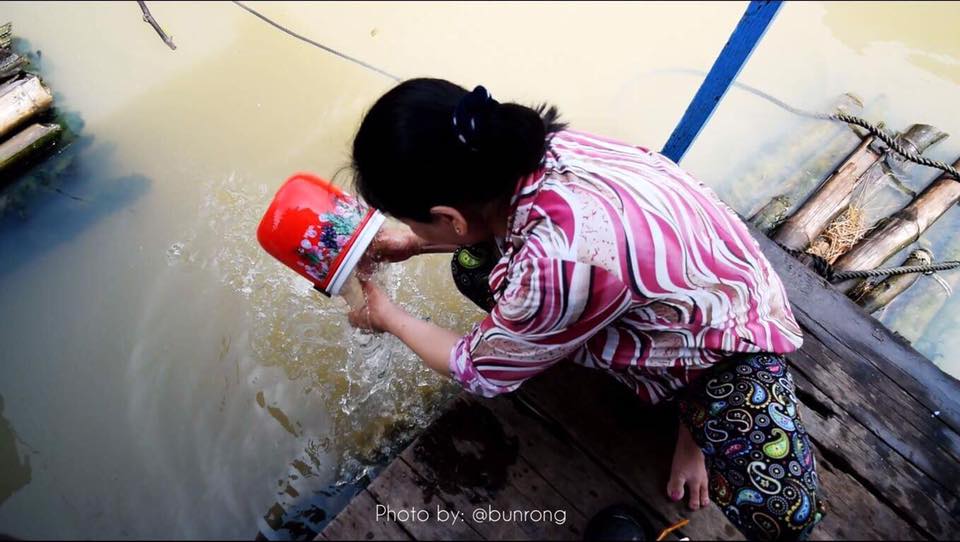
The Along the Water team is producing an immersive 360° documentary about how our water became polluted and how it affects the living surrounding it. The video explores the life of a family living on a floating house and the close strings that tie water and life. A sculpture of a huge blue water drop covered by the waste it holds connects us to this precious resource and shows how “what goes around comes back around.”
Artist team: Prum Bandiddh, Khim Darath, Mech Sereyrath
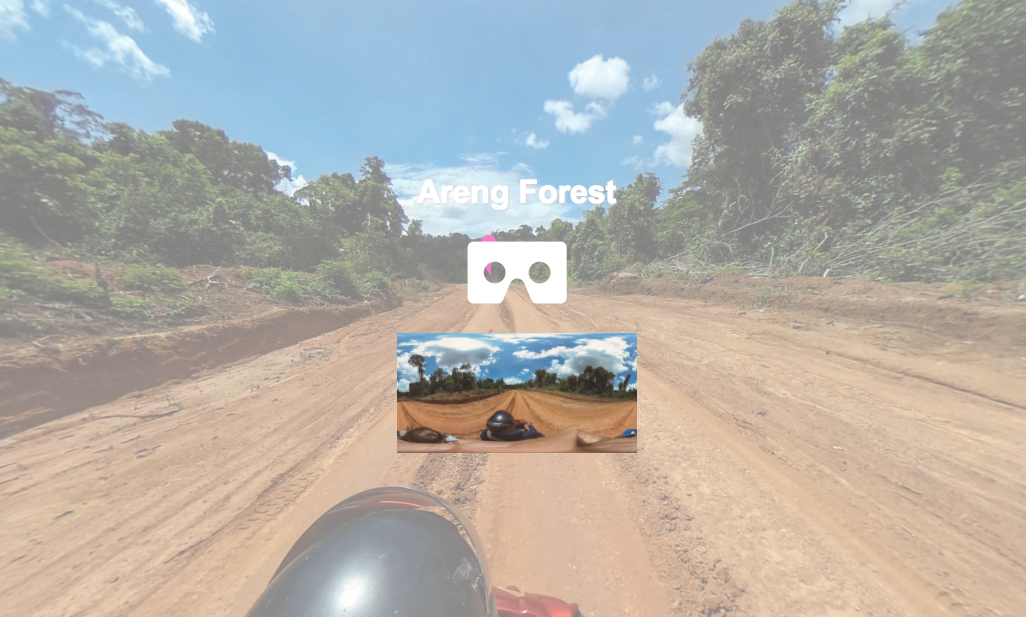
The Bring the Forest to the City team is traveling to three separate Cambodian forests to document them with 360° images and sounds. They are building these into web-based interactive VR experiences of the Areng Forest as well as the Chom Bok Forest in Kirirom National Park in Kom Pong Spuer. The goal is to connect the residents of Phnom Penh, particularly the younger, with the diverse biosphere that is at risk of consumption.
My month-long American Arts Incubator workshop in Cambodia focused on new media and global challenges. The question posed to participants was, “How can environmental health be supported by new media art projects?” Throughout the workshop we experimented with 360 virtual reality and augmented reality as storytelling tools. We talked about using art to engage communities and promote innovations that could lead us on a path to an environmentally sustainable future.
The culmination of the workshop was a new media exhibition at Bophana Center in Phnom Penh from May 17 to June 16, 2017. We had an enormously successful opening reception with guests and panelists from the U.S. Embassy at Phnom Penh and organizations like Development Innovations and Eco Life Cambodia.
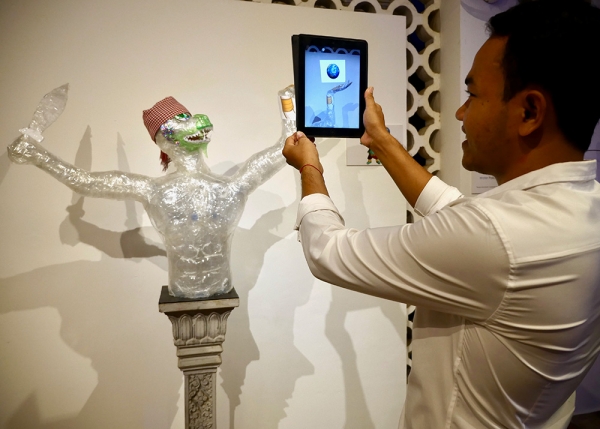
The four community artist teams worked hard to put together this fantastic new media art exhibition, which was the first of its kind in Phnom Penh (according to folks who attended the opening reception!). Audiences were enthralled by the inventive uses of new media — from a VR documentary bringing you right into a family's living space on a floating house to augmented reality triggers on a mythical mermaid goddess that made objects in the frame disappear. It was exciting to watch people interact with all the VR/AR projects and engage in discussions about the environmental issues that the projects tackled. We couldn't have hoped for a better opening night.
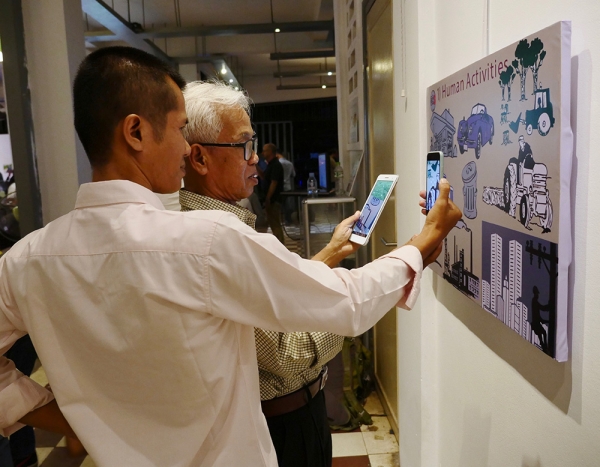
In keeping with the theme of environmental sustainability, the project installations were powered by a 260-watt solar panel that we installed at Bophana Center at the start of the workshop. Low power devices such as 13-watt fans, 11-watt HDTV monitors, and LED projectors were in play during the exhibit – and they all used the power of the sun!

As lead artist for American Arts Incubator — Cambodia, I also premiered a new augmented reality installation “Circle Time” in collaboration with artist Anula Shetty. This installation uses hand gestures from classical Cambodian dance as triggers for a series of documentary videos exploring the new environmental/recycling-focused "Coconut School" being built in the Kirirom Forest. The participants were excited to see that there was a fifth artist team and were helpful as we all worked together in the mounting and installation.
All in all, the technology and internet cooperated throughout exhibition which created a real sense of accomplishment for all artist participants.
We have now have 4 active teams organized and developing their immersive media projects in Phnom Penh. They are exploring a great range of environmental concerns through immersive media projects. In the week of workshop exercises we played through the production and experience of augmented and virtual reality. Combining this technology with the aim of supporting environmental sustainability has led to some amazing project concepts.
This group has developed an infographic poster that will trigger 19 separate overlay video segments via augmented reality. The challenge is investigated in three phases: Human Activity that is causing global warming, the Risks we all experience as a result of the effects, and the Solutions we can employ to avoid the on-coming collision of wasteful prosperity with environmental destruction.
A second group is travelling to three separate Cambodia forests to document them as 360 images and sounds. These will be built into interactive VR experiences and a map-based app. The goal is to connect the residents of Phnom Penh, particularly the young, with the diverse biosphere that is at risk of destruction.
Statues of a traditional Cambodian dancer and the god, Hanuman, made out of recycled plastic bottles emerge from piles of trash. Images on these sculptures will trigger augmented reality 3D models of the miraculous modern materials we are able to create, but then treat without respect. Hanuman saved the world once upon a time. Can we all join him in this current epic quest to return the earth to health?
A fourth group is producing a 360 video about people living in floating houses on the river. They are also planning to have a sculpture with a projection on it as part of the exhibition. Living with the water pollution at Tom Nub Korb Srov in Phnom Penh will exemplify the adage that “what goes around, comes around.” How can we take care of that which sustains us?

We are underway with the American Arts Incubator — Cambodia workshop at Bophana Center!
In our workshop we have done a series of exercises working with the Aurasma augmented reality app. One group of students created an “aura” that uses the image of a skull-and-crossbones landmine warning sign as a trigger for an augmented reality overlay — a video they shot of discarded plastic bottles and other trash on the street. At first there were comments that the landmine warning was too extreme for this association with trash. But then as we discussed it, we began to wonder if future generations might look back on us with the same terror and concern. Is all this careless waste laying new treacherous mine fields for our children to cross? The documentary, A Plastic Ocean, screened at the American Corner at Paññāsāstra University of Cambodia last week revealing to us the tragic impacts of the flood of indestructible waste that pours from our consumer lifestyles.
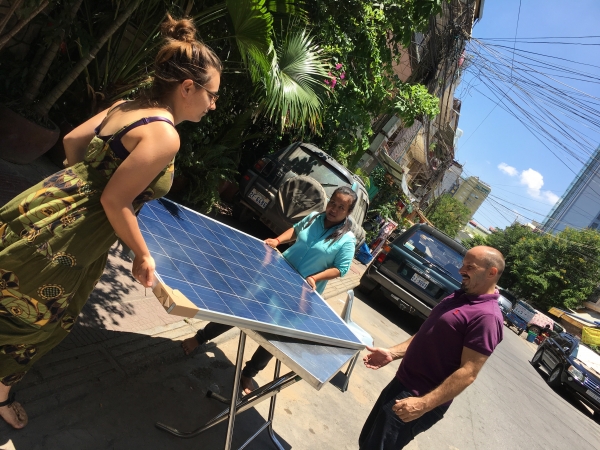
In an effort to do our part, NRG Solutions - Kruosar Solar has completed a soft install of the components of the 260 watt solar panel, battery, and charge controller system we are donating to Bophana. We are going to hook it up and test out a variety of locations in the Bophana space, finishing the install next week. In addition, we purchased some really exciting low-power appliances from Niwa Solar to run on the power generated. There is a super bright light that only draws 3 Watts, a standing fan (13 W), 18” television monitor (8-11 W) and USB chargers. They all run directly from the 12 volts supplied by the 100 amp hour battery without the need of an inverter. We already have the components that can keep us cool, lit, and connected, bathed in electronic images and sounds! Plenty of extra power will be generated to share. Sustainability is achieved when the power generated balances the power needs. Once that point is reached, we have caught the wave and are surfing on photons streaming from the sun.
The average temparature of Earth's whole atmosphere cycles up and down each year because its southern hemisphere has more ocean coverage than the northern hemisphere. When these temperatures are graphed throughout the past 137 years you see that there is a range of warmer and cooler years. Color coding by time range produces a sharply separated rainbow - revealing a tragectory. The separated lines in recent years show that unfortunately this temperature velocity is accelerating.
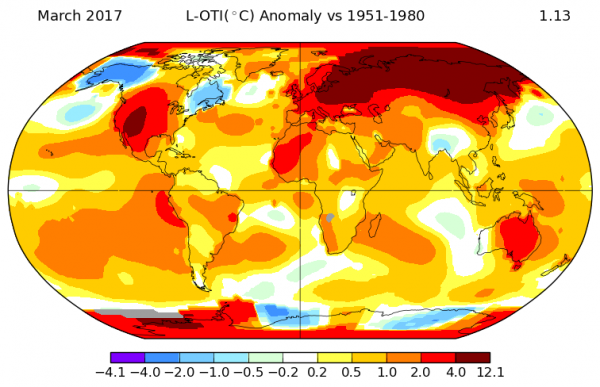
Global map of the March 2017 LOTI (land-ocean temperature index) anomaly shows that North America and Siberia were again much warmer than the 1951-1980 base period.
Preparations are underway for the American Arts Incubator Cambodia environmental sustainability workshop at Bophana Center, Phnom Penh!
Kruosar Solar / NRG Solutions and Bophana Center are meeting to discuss the installation design factors of the new solar powered time lens media installation. We will be setting up the system next week and aim to have collected enough electricity to be inaugurated it by powering the April 21st artist talk and the the week-long workshop starting on Earth Day, April 22nd.
The workshop is open to anyone in Phnom Penh interested in using media to improve environmental health. To enroll please apply here:
Session 1 – Earth Day – Past
Saturday April 22, Bophana Center
Virtual Reality – Immersion into a location at a previous time
Ricoh Theta–S 360 camera, Kolor Panotour Pro virtual tour authoring software
Session 2 – Present
Sunday April 23, Bophana Center
Augmented Reality – Layering onto the current location
Aurasma augmented reality app
Session 3 - Moments
Wednesday April 26, Design Innovations
Work session for Video editing, and VR/AR editing and authoring
Session 4 – Future
Saturday April 29, Bophana Center
Collaboration and Creativity - What impacts do these media produce? What futures do we see through the time lenses? What “images” are revealed?
Session 5 – Sustainability
Sunday April 30, Bophana Center
What kinds of time lenses can be focused on sustaining the abilities of our shared environment?
4 groups pitch their project ideas. These are developed in the following 2 weeks, each with a $500 project grant.
Sustainability Achievement unlocked – One Million Liter Rain Catchment System
In preparation for the Arts Incubator I have been training up my own sustainability skills and have just completed a fresh water collection system.
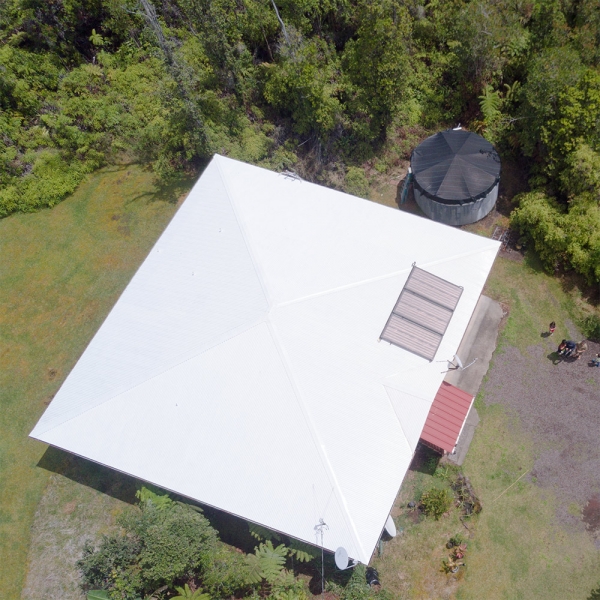
A silicone painted roof clean rain catchment system that collects 1 million liters of fresh water each year.
The roof is a square that is 15.5 meters per side = 240 square meters of surface area
At this location, the rainfall averaged 4.55 meters per year between 1993 – 2010.
The average annual volume of water that falls on the roof can be calculated by:
240 square meter roof area x 4.55 meter depth of water
= 1092 cubic meters of water
= 1,092,000 liters of rain collection.
The rain water is stored in a 37,000 liter water tank. When needed, it is filtered, UV sterilized and pumped throughout the house.
One month until American Arts Incubator begins in Cambodia. In preparation, I am working with Bophana Center and Kruosar Solar to design and install a local solar electric power system at Bophana, where the exchange program will occur. It will provide electricity for the month of workshops and project development. After the exchange it will continue to provide power, sustaining the community projects, building environmental health. Each day the energy is replenished when rotated into the stream of sunlight. What worlds will we create with the power we collect?
When my kids pre-ordered the Nintendo Switch earlier this year we decided to add another level to the game - it would only be charged with power they collected. Before it arrived we put together the power system– a 21-watt portable solar panel with charge controller connected to a 5-volt USB battery pack. Now that the Switch has arrived they can use it as much as they want, as long as they are able to keep it powered by the sun. If they can power it, they can play it.
We are learning to get really good at catching the sunlight.
A photon that will reach the earth has just left the sun.
photons fall upon us
born in the fusion reactor at the center of our solar system
4 billion kilograms of matter converted into photons every second
only 1 in 2 billion photons are radiated directly towards the earth
every second 2 kilograms of matter is converted to energy and sent just to usIn 8 minutes and 19 seconds they complete their journey of 150 million kilometers
some of this light is reflected back into space
less now that the ice has melted
some is harvested by plants giving them the power to grow
a few are caught by solar panels and transfer their energy into electricity we can use
most end their journey by simply spilling heat into the oceans and onto the global citynew photons are just now beginning their journey from the sun
their light will be here soon
catch them before we spill
I have a lot to digest after the intensive American Arts Incubator orientation retreat with ZERO1 in rainy San Francisco. Kate Spacek, Shamsher Virk and Michelle Peregrin provided valuable support and resources. Fellow AAI artists Balam Soto, Elaine Cheung, Scott Kildall and Nathan Ober offered much inspiration in their creative work and innovative plans for their exchanges focusing on water pollution, disability inclusion, economic equity and inclusive peace.
In April – May 2017 I will have the honor of collaborating with an exciting group of artists, activists and organizations in Phnom Penh, Cambodia. In partnership with our host organization, Bophana Audiovisual Resource Center, we will be developing a set of media projects focused on the challenges of Environmental Sustainability and Deforestation. Updates and feedback can be followed on our Exchange Facebook Page. By using collaborative video, augmented and virtual reality to layer memories and imagination onto the world around us, we will create time lenses that reveal pathways to a sustainable future.

After 30 traumatic years of war, Cambodia’s economy has been growing at one of the fastest rates in the world. In what ways can an improved standard of living be achieved while also increasing sustainability? Societies with modest energy and resource usage are actually already much closer to achieving this balance than high-use countries. Throughout the exchange we will practice renewable energy skills by powering the workshop and projects with solar power. Krousar Solar will be a key local resource for our solar power technology needs. Cambodian society has a great potential to develop the models that lead us to a sustainable world.
We will design the final exhibited projects to be self-sustainable entities that have their own built-in renewable power generators. What types of energy do the projects require? What power sources can be designed to sustain them? The balancing skills of sustainability are games that, if played well, can be won.